Learning 3D Modeling Product design and 3D Printing to make a daily use fully functional CyberDeck
~Jen 2023~
Started Learning to make a part for my keyboard to customize it.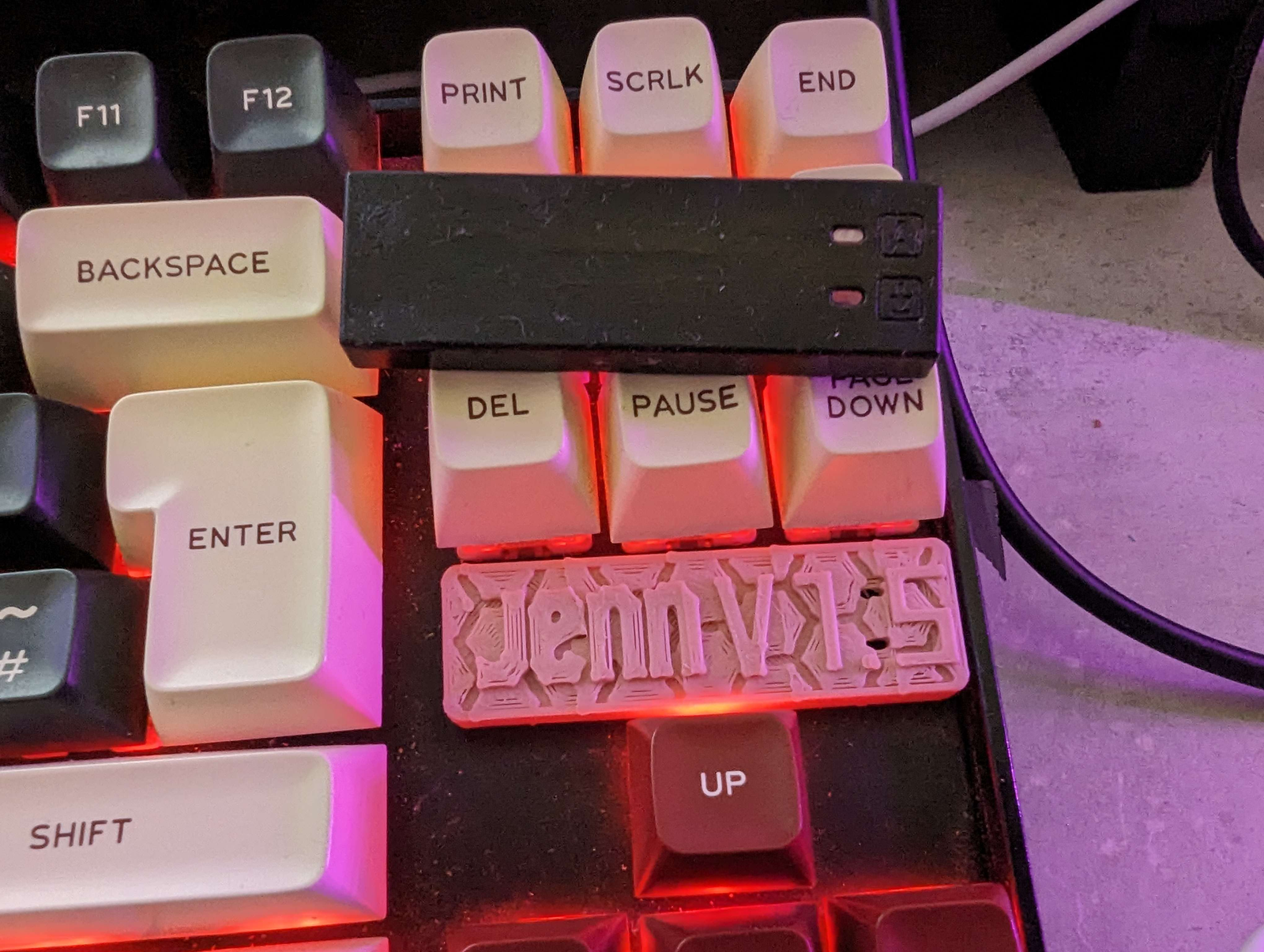
Embarking on my 3D modeling journey, I delve into the realm of creativity, crafting an homage to the iconic IBM keyboards of yore. With excitement and determination, I embrace the challenge of sculpting a bespoke case for my keyboard, merging nostalgia with modernity. As a novice in the realm of 3D modeling, this project marks a significant milestone, as I translate my imagination into a tangible, real-world object. The fusion of vintage inspiration and cutting-edge technology awaits, as I embark on this thrilling adventure.
After countless hours of meticulous design and refining, the moment of truth arrives. Armed with my trusty 3D printer, I bring to life the culmination of my efforts—a meticulously crafted keyboard case inspired by the timeless IBM design. The journey, marked by trial and error, has led me to this pivotal point. With bated breath, I witness the final print take shape, and as I delicately fit it onto my keyboard, a surge of satisfaction washes over me. The fusion of artistry and functionality has been achieved, a testament to perseverance and craftsmanship.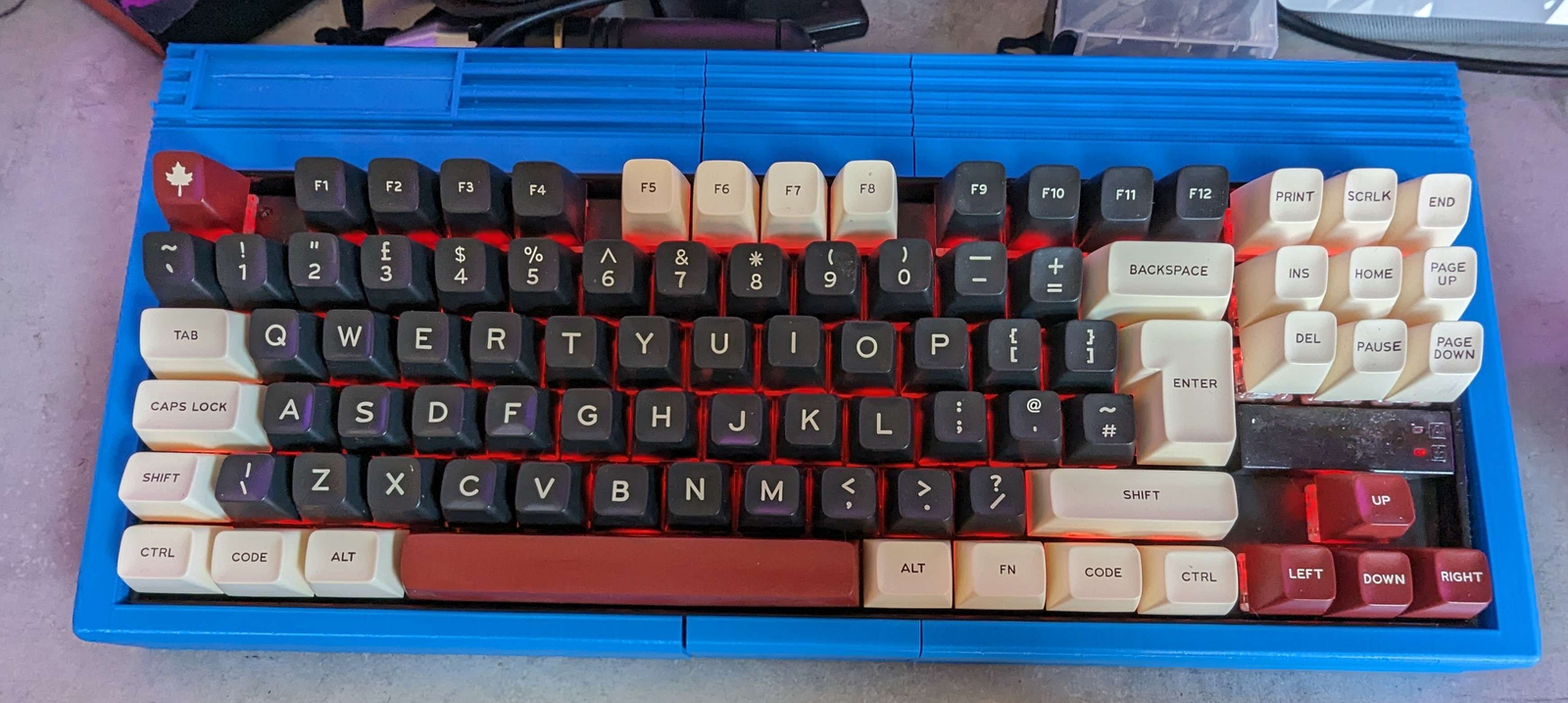

Immersed in the vast expanse of the internet, I stumbled upon the captivating world of cyberdecks. The allure of these futuristic, self-contained computing systems ignited a spark within me. As fate would have it, my daily machine’s unfortunate encounter with the trials of transit provided the perfect catalyst for embarking on this ambitious project. Fuelled by a passion for innovation and a desire to create something truly unique, I eagerly delved into the depths of cyberdeck designs, drawing inspiration from the ingenious minds who had paved the way before me. With each intricate blueprint and awe-inspiring concept, my enthusiasm grew exponentially, driving me to transform this dream into tangible reality.
(Here are some of my insprations)
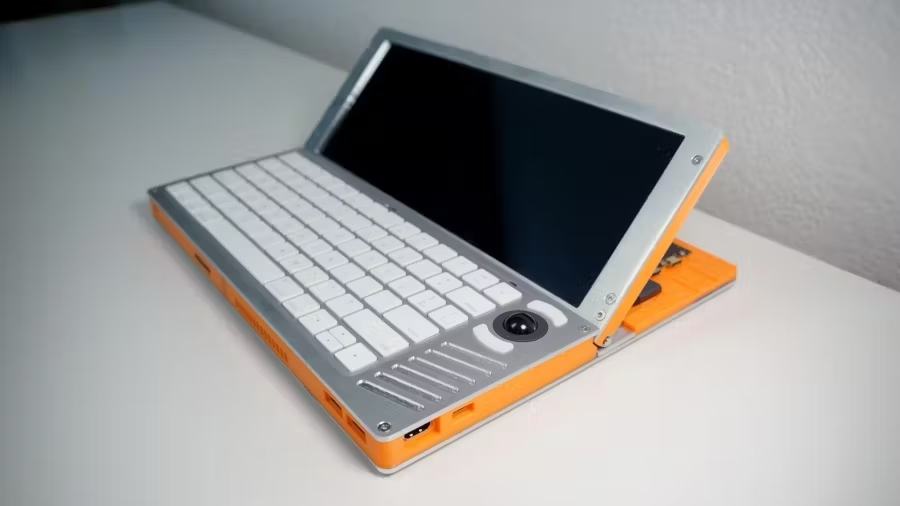
I envisioned a cyberdeck that seamlessly blended portability with the allure of a futuristic aesthetic. Armed with an ultrawide screen as the centerpiece and a versatile Framework motherboard, I meticulously crafted a design that would make this machine easily transportable. With a keen eye for detail, I ensured that every element, from the sleek frame to the modular components, harmoniously coalesced into a cyberpunk symphony. The result? I soon realized that the path to perfection is often paved with iterations. While this initial design captured the essence of my vision, I acknowledged that it may not survive beyond the design stage. Recognizing the potential for improvement and evolution, I embraced the idea that this creation might become the V3-4, a stepping stone on a journey of continuous innovation. 
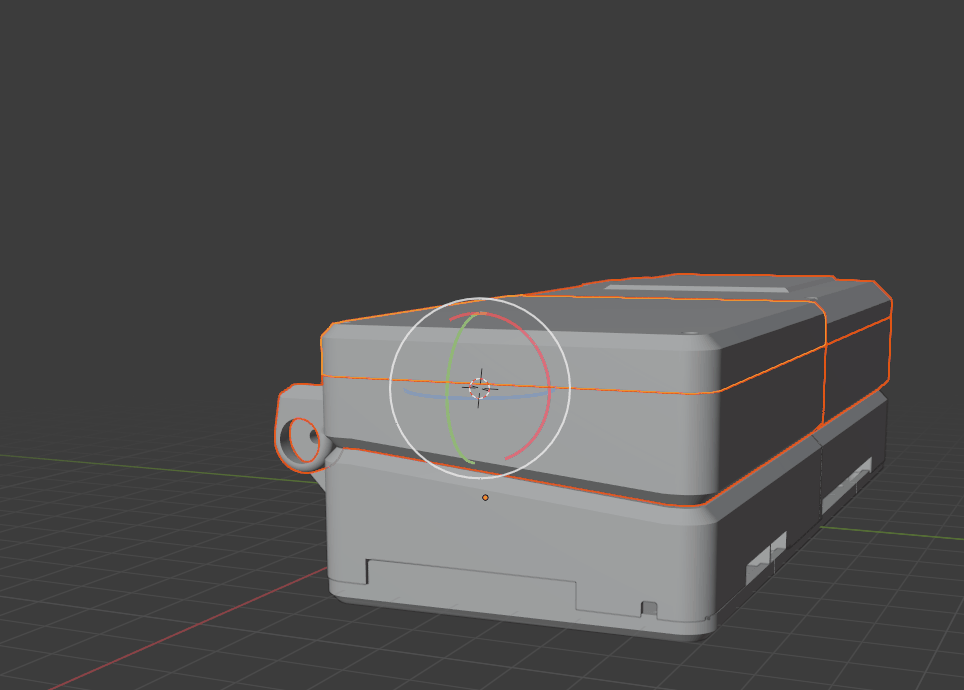
Infused with inspiration from the iconic NASA PCs, I embarked on a transformative journey, remodeling my cyberdeck to evoke the spirit of the legendary GRID Compasses. Guided by a deep admiration for the pioneering space-age aesthetics, I meticulously crafted a design that paid homage to the sleek lines and minimalist charm of those historic computing machines. Every detail, from the angular contours to the retro color palette, was carefully chosen to capture the essence of the GRID Compasses while seamlessly integrating modern technology. As I breathed new life into my cyberdeck, I couldn’t help but feel a sense of reverence for the past, blending it harmoniously with the cutting-edge innovation of the present.As I ventured into the realm of 3D printing, I encountered a humbling realization: my current skill level was not yet sufficient to bring the GRID version of my cyberdeck to life. Despite this setback, I persevered, fully modeling the design with meticulous attention to detail. I understood that this iteration would serve as a testament to my ambition and a blueprint for future endeavors. With a determination to grow and refine my 3D printing skills, I eagerly anticipated the day when I would revisit this version of the cyberdeck.



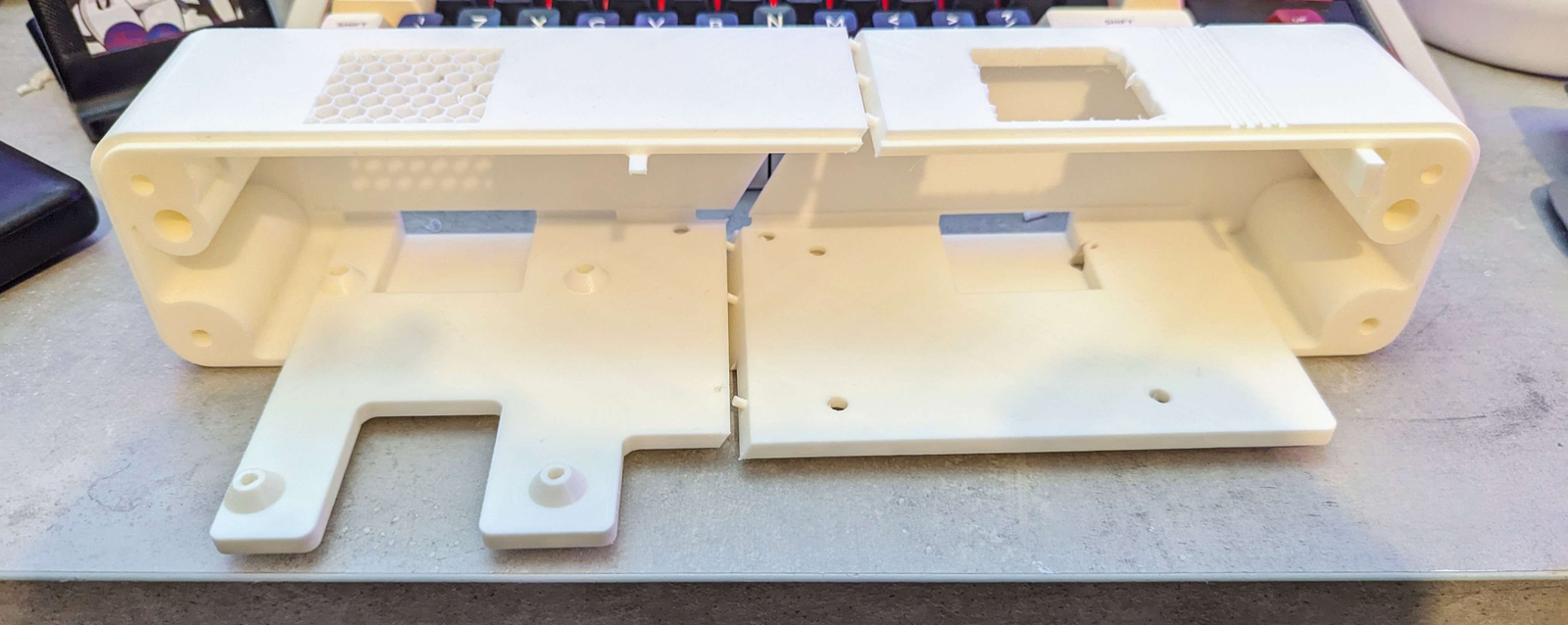
In a stroke of inspiration, I found myself drawn to repurposing the timeless elegance of a Smith Corona 8000Lt typewriter machine for my cyberdeck’s final design. Enamored by the fusion of vintage charm and modern technology, I embarked on a journey of transformation. Meticulously disassembling the typewriter, I carefully integrated its iconic elements into the cyberdeck’s framework. The keys became tactile inputs, the metal body added a touch of industrial sophistication, and the typewriter’s distinctive carriage found new purpose as a housing for additional components. The result was a cyberdeck that seamlessly blended the nostalgia of the past with the cutting-edge functionality of the present, a testament to the limitless possibilities of creative ingenuity.


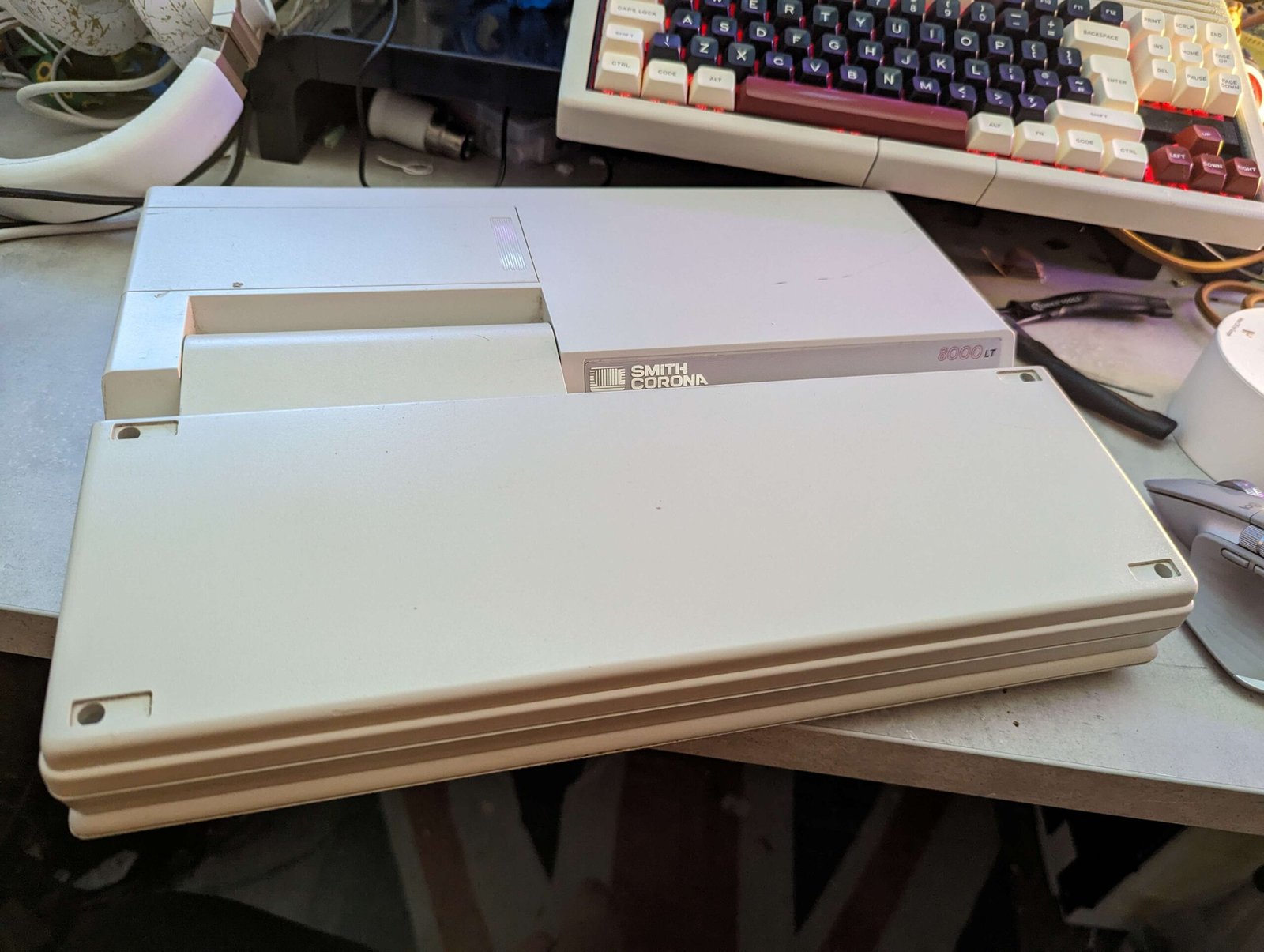
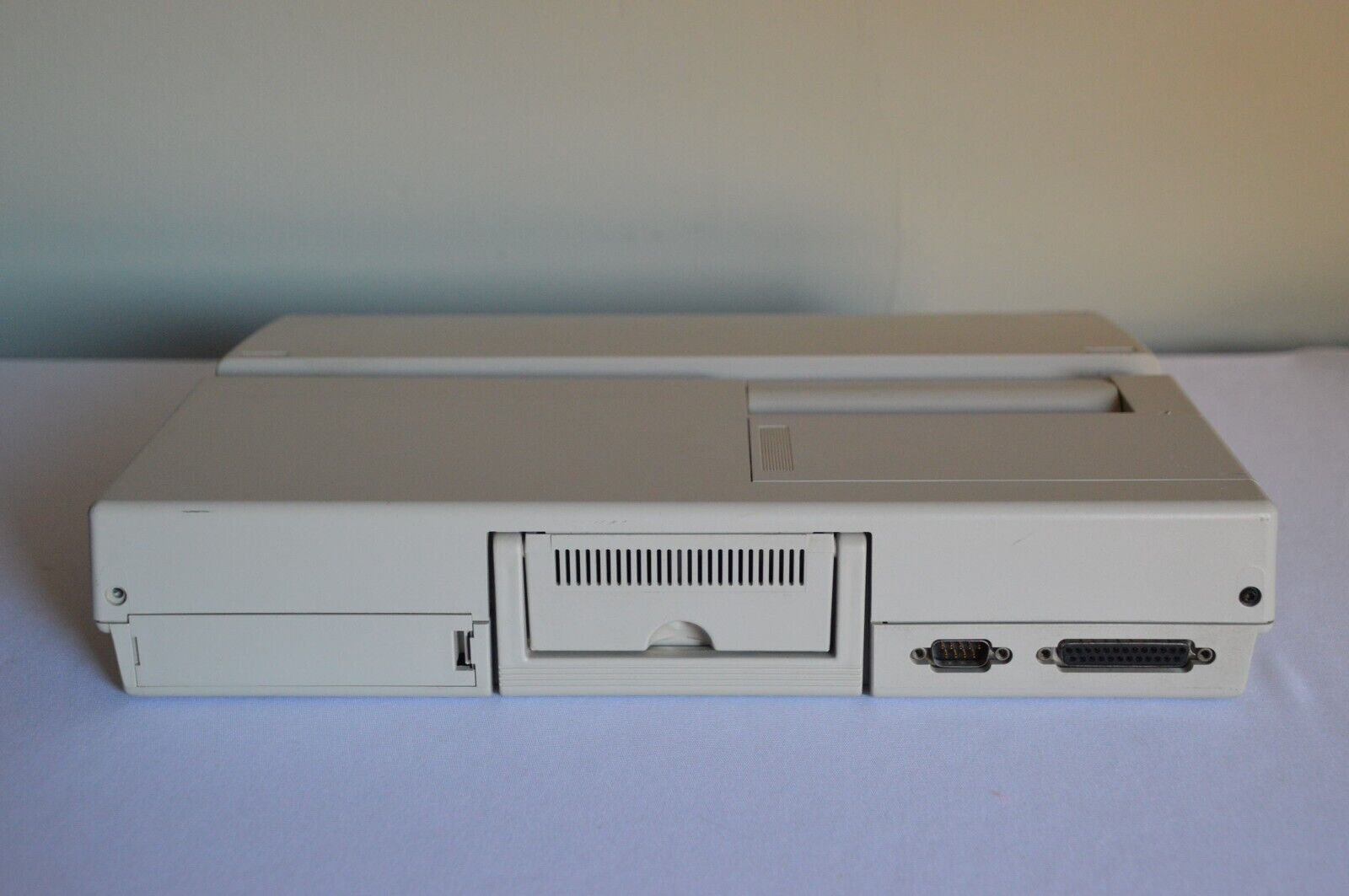
For the final hardware of my cyberdeck, I carefully selected each component to ensure a seamless blend of performance, portability, and modernity. Here are the reasons behind my choices:
2K IPS LCD Wide Bar Screen: I opted for a 2K IPS LCD wide bar screen to provide a visually immersive experience. The wide aspect ratio allows for efficient multitasking and enhances the cyberdeck’s overall aesthetic appeal, reminiscent of retro computing systems while offering modern display quality.
Framework Laptop 13 Antenna Module: The Framework Laptop 13 antenna module was chosen for its reliability and versatility. It ensures solid wireless connectivity, enabling seamless internet access and communication, crucial for a portable cyberdeck that can be used on the go.
Framework Laptop 13 Battery: The Framework Laptop 13 battery provides long-lasting power, allowing extended usage without the need for frequent recharging. This is essential for a portable cyberdeck, enabling uninterrupted productivity and entertainment wherever I take it.
Framework Laptop 13 Mainboard (11th Gen Intel® Core™): The Framework Laptop 13 mainboard, powered by the 11th Gen Intel® Core™ processor, offers a balance between performance and power efficiency. This ensures smooth multitasking, fast processing, and the ability to handle demanding applications, making it ideal for my cyberdeck’s computing needs.
By choosing these specific components, I aimed to create a cyberdeck that combines the nostalgic charm of vintage computing with the capabilities and convenience of modern technology, resulting in a powerful yet portable machine that meets my requirements for both form and function.*